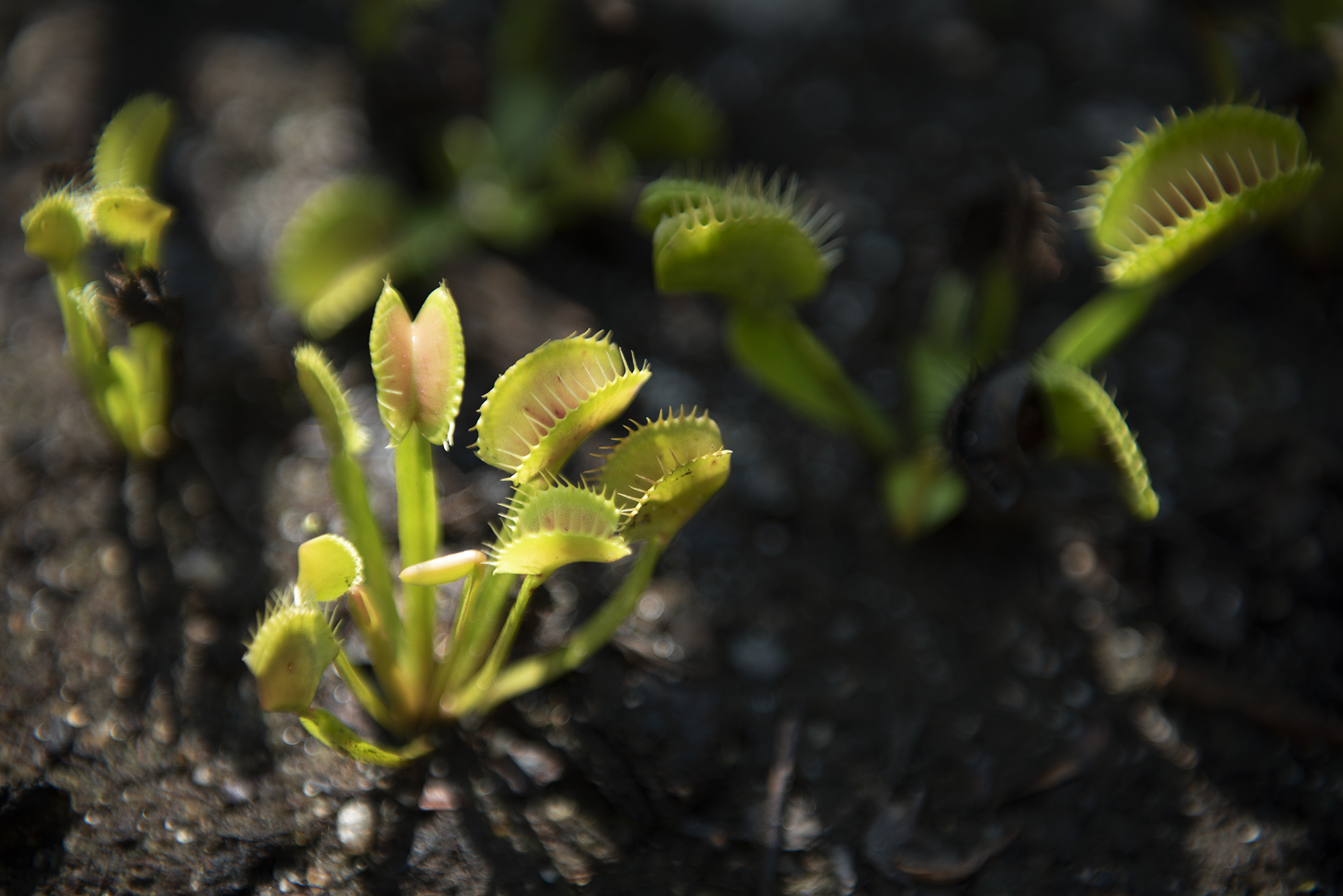In the brush of North Carolina’s humid swamplands, a predator lies in wait. It’s perfectly still. It doesn’t breathe. It hasn’t had a meal in almost a month, but patience goes a long way out here.
Suddenly — its chance! A beetle, drawn to the hunter’s scent, comes to investigate. It casually alights on the open maw, and in its meandering the beetle trips one hair-like sensor, and then another. The hunter pounces.
In a tenth of a second, the Venus flytrap springs to life and its leafy jaw snaps shut, ensnaring the beetle in a prison of spiky hairs. It’s a grisly end for the insect. Over the next few days, digestive enzymes will turn it into an absorbable goo. But for the plant, it’s an opportunity to live a little longer in a habitat nearly barren of nutrients.
The Venus flytrap, and carnivorous plants like them, are oddities of the plant world. Carl Linnaeus, a famous 18th-century botanist who developed the modern method of assigning species scientific names, dubbed flytraps “against the order of nature as willed by God.” But Charles Darwin found delight in these strange creatures, calling them “one of the most wonderful plants in the world.”
Whether monstrous or wonderful, flytraps have existed on North Carolina’s coastal plain for millions of years. But they’re facing an uncertain future — between poaching and habitat loss, the amount in the wild has significantly decreased since 1958.
“There’s a concept called “plant blindness” that people have — blindness to the recognition of plants and their diversity,” Johnny Randall, the director of conservation programs at the North Carolina Botanical Garden, says. “All carnivorous plants are fascinating, but for Venus flytraps to be active traps that actually close to capture its prey — it’s just a marvel of evolutionary biology.”

Johnny Randall, director of conservation programs at the North Carolina Botanical Garden. (photo by Matthew Westmoreland)
Randall is an expert on flytraps and other rare plants in the Carolinas. He and others at the botanical garden— and across UNC — are working to preserve these species and their genetic diversity both in the lab and in the field.
As one of the most well-known plant species in the world, wild flytraps are the victims of widespread poaching. In one afternoon, a poacher can dig up hundreds of individual plants to sell to online companies or nurseries. It’s a felony in North Carolina to take them from public land and from private property without written permission, but local law enforcement rarely has the resources to pursue poachers aggressively. Considering that there are only about 400,000 in the wild, poaching losses quickly add up.
Flytraps are picky about where they root, too, and the development of the sunny, wet pine savannas where they grow is also taking its toll. They are found nowhere else in the wild except for a 90-mile inland radius around Wilmington, where the soil is high in water content but low in nutrients — so meager, in fact, that flytraps and other carnivorous plants in the area evolved to eat insects. That habitat loss is further spurred by fire suppression. Unless their habitat is burned or mowed every few years, the flytraps are shaded out by larger plants.
“These wet pine savannas are some of the most biologically diverse sites on Earth,” Randall says. “There’s always been an issue of ruining flytraps’ habitat from draining for agriculture and overall development.”
In an ongoing project, the Botanical Garden is working with the Carolina Center for Genomic Sciences to conduct the first-ever evaluation of genetic diversity of wild flytraps. By mapping the spread and variety of genetic traits, or genotypes, across the state, UNC can determine which populations should be targeted for conservation efforts. They can also find out whether genetic variation is declining alongside overall numbers.
“If there are unique genotypes in some regions, especially if they are on unprotected land that’s not being properly managed, more emphasis can be placed on conserving those populations,” Randall says.
As the official state carnivorous plant — a seemingly obvious choice, but North Carolina has 34 species of animal-eating plants — flytraps are a symbol of weirdness in the plant world. Considering alternative methods to traditional restoration efforts could be a saving grace in an uncertain future.
Genetic guardians
Flytraps, like most organisms in nature, are found in what are known as populations. Each population is a little bit different, and the genetic makeup of these populations sometimes varies due to differences between habitats.
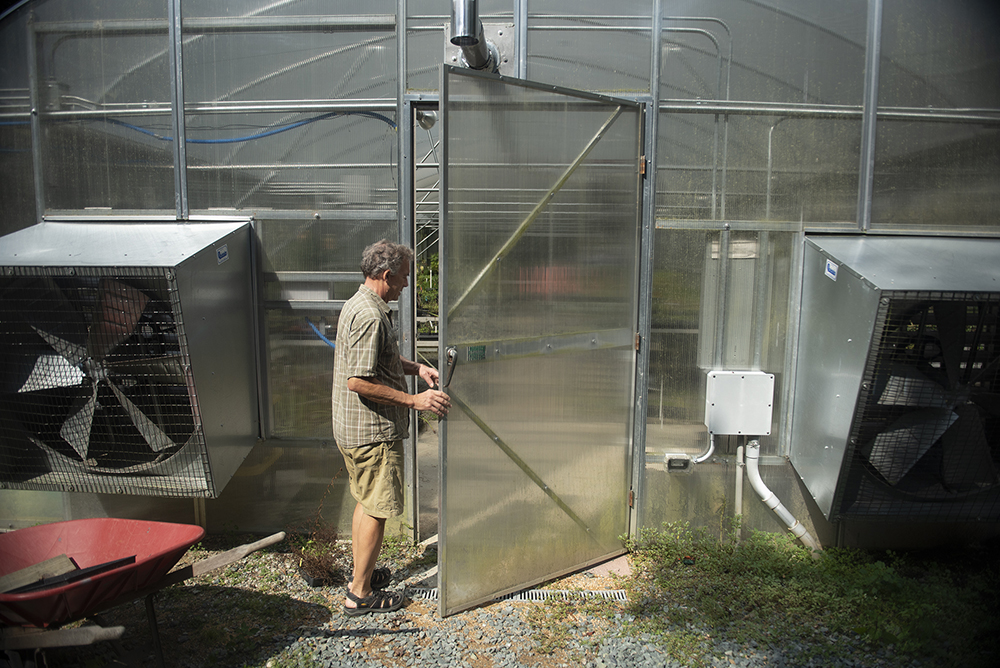
Randall enters the greenhouse used for cultivating plants for preservation and research at the N.C. Botanical Garden. (photo by Matthew Westmoreland)
Just as buying multiple lottery tickets increases someone’s chance of winning, genetic diversity increases the odds of a species surviving changes to its environment. If some flytraps have the right traits for heat resistance and others for frost resistance, then the plants are likely to survive a major climatic change in either direction. The same goes for disease resistance or proclivity to different amounts of rainfall. Natural selection favors those that adapt.
As of the spring of 2019, 100 populations exist on the North Carolina coastal plain, according to Stephanie Horton of the North Carolina Natural Heritage Program. Twenty-one populations touted more than 2,000 individuals, but 51 contained fewer than 500. In addition, in 31 places where flytraps were known to have once grown, researchers found no trace of them.
“It’s really been declining over time, mostly because of environmental problems,” Randall says.
By understanding where genetically diverse populations are located in the state, conservationists can zero in on what areas need their help. That work begins in the lab, where Corbin Jones, a population geneticist in the UNC biology department, has identified four genetically distinct groups in North Carolina.
“So this population up here is clearly genetically very distinct,” Jones says as he traces the base of his pen over a digital map of eastern North Carolina. A large red circle surrounds the Sandhills.
He moves his pen until it hovers over two other circles, almost touching at the point where Wilmington is marked on the map. “What we thought was surprising is that there’s kind of a hard break between these two groups.” He taps at the thin space between the circles. “That’s the Cape Fear River. That’s probably what’s defining the difference between them.”
For the past two years, Jones has been working with Randall and another UNC genetic biologist, Gregory Copenhaver, to parse out the secrets hidden in the flytraps’ DNA. The Jones Lab in particular has spent time finding genetic differences between the rare carnivorous plants.
A new part of that project involves mapping the plant’s entire genome — something that has never been done before.
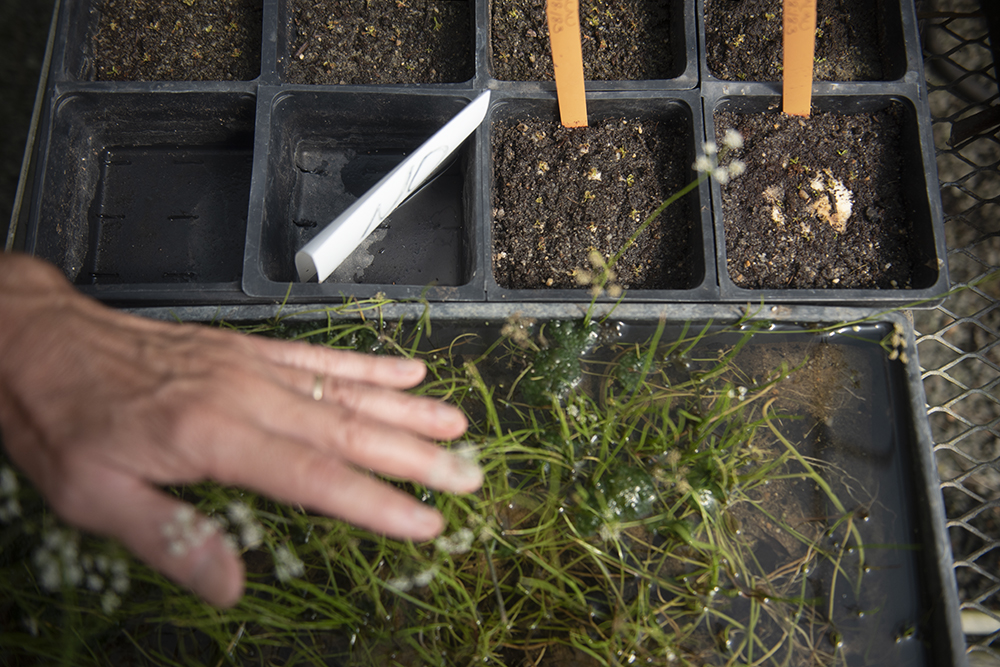
Randall gently moves a crop of rare native grass out of the way to show his Venus flytrap seedlings. (photo by Matthew Westmoreland)
“There’s been a technological revolution that is allowing us to do a decent genome cheaply,” Jones says. By mapping the entire genome, they can more accurately assess the differences and similarities in DNA with less guesswork.
Using state-of-the-art technology, conservationists have a better picture of what they’re working with and what the species looks like at a genetic level. Jones thinks that within the four genetically unique groups, they may find lots of variation — which makes archiving these plants just as vital as discovering them.
Luckily, the botanical garden is already on it.
A modern ark
One hundred miles away from the flytraps’ native range, UNC conservation biologist Mike Kunz opens a small envelope and tilts the contents into his cupped hand. Thousands of flytrap seeds, shiny black and tiny, spill out across his palm. It’s enough to populate a whole meadow.
Stored in the chilly purgatory of the botanical garden’s seed desiccation room, they are waiting to be put into long term storage in seed banks. Some samples will stay here, but others will be shipped as far away as Fort Collins, Colorado, to be stored in the National Laboratory for Genetic Resources Preservation.
Before they can be packed away for posterity, a few of their randomly selected kin are sprouting in a growth chamber down the hall to make sure that they are still viable after transport, cleaning, and cooling. Tiny flytraps grow in Petri dishes, less than a quarter of the size of a pinky nail.
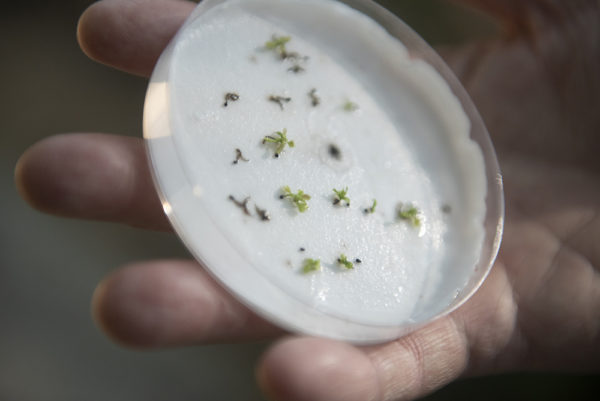
Before they are planted, the N.C. Botanical Garden grows Venus flytraps seedlings in Petri dishes. (photo by Matthew Westmoreland)
“They’re super cute,” Kunz laughs.
Armed with information from the Copenhaver and Jones labs, the botanical garden is creating a seed bank that reflect the species’ genetic diversity in the wild. A bank acts like a modern version of Noah’s Ark, but with way more than two individuals and the goal to preserve plant species in the face of habitat destruction, natural disasters, and the effects of climate change. Seeds can be pulled from the bank for use in later restoration efforts. There are banks across the world, even one near the North Pole, dedicated to this style of long-term conservation.
Teams from the botanical garden collect seeds from across the coastal plain during summer, after the flytraps have bloomed in May and June. They meticulously gather them from a variety of locations, conscientious not to take too many, yet still come away with thousands to store for future planting and analysis.
The lab work means that the botanical garden gets an accurate picture of the seeds that they are storing for the future. Banks are powerful tools for restoration and understanding the genetics of what’s stored there helps determine where to plant them when they’re needed.
Kunz has been working with Randall to create the bank, which is currently a large and extremely cold chest freezer in one of the botanical garden’s back rooms. Inside, small frozen and vacuum-sealed envelopes rest in orderly, labeled rows — a safety net for the future.
The waiting game
In October 2016, 26 researchers across the nation, including Randall and four others from UNC and the botanical garden, submitted a petition to the U.S. Fish and Wildlife Service (USFWS) to list flytraps on the federal Endangered Species List. It is currently under review for listing and will undergo intense scientific scrutiny and public comment before the USFWS makes a decision. This was supposed to happen by December 2018, but the USFWS has a backlog of over 500 species to review and flytraps are considered a mid-level priority. A proposed ruling is not scheduled to be made until 2023.
Federal protection would afford flytrap conservation more funding and security. A petition or listing also means that more research is needed to understand the imperiled species and make a decision.
“All the research that’s kicked up around the species and its ecology is a good thing,” Randall says. “It will give better management guidelines to improve population health and better information on some of the small, unprotected sites.”
But it will take years before protections may or may not be handed down. In the meantime, habitat destruction and poaching are expected to remain primary issues.
“We have received poached plants in the past, and we’ll grow them up a bit and repatriate them,” Randall says. “But we know of at least one place where we put them back and they were just poached again.”
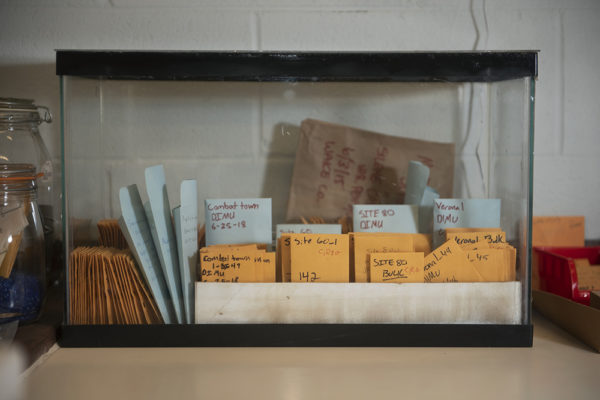
Thousands of Venus flytrap seeds are dried and preserved for conservation in pouches like these before being put into cold storage or shipped to other labs. (photo by Matthew Westmoreland)
Although it’s a felony to poach them, it’s perfectly legal to own one — but it’s important to make sure that the plant you pick up came from a reputable source.
“Ask the questions,” Kunz says. “If they can’t tell you where they got their Venus flytraps, go somewhere else to buy them.”
But the presence of a bank will keep a diverse set of seeds safe from poachers and developers. If and when major restoration efforts need to be taken to preserve this unique species — and others — in the wild, there’s a plan in place. It’s on dark shelves in frozen envelopes. Waiting.


